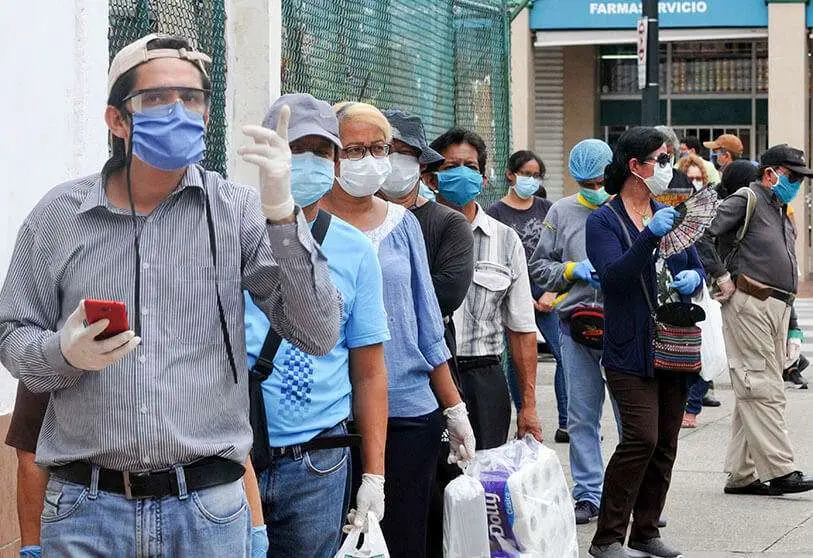Five milestones for Latin American development in 2021

Despite the wishes and hopes of much of humanity, 2021 will remain in our memory as another year marked by the pandemic. It was the year in which we began to see the light at the end of the tunnel thanks to vaccines, and there was also a certain economic euphoria after an upturn in global growth, but the social, personal, health systems and economic activity consequences continued to tip the balance towards the crisis.
Economic growth in Latin America and the Caribbean in 2021 is estimated at 6.3% of GDP, a very positive development after the severe recession of 2020. But experts predict that maintaining these levels of growth will be difficult in the coming years, so the countries of the region will have to strengthen their social protection systems, invest more and better in infrastructure and work on increasing productivity and competitiveness.
In any case, 2021 leaves us with some development milestones in Latin America and the Caribbean that are worth highlighting:
1) Vaccination advances in Latin America and the Caribbean.
While the West and China were advancing their vaccination processes at a frenetic pace, developing regions had difficulty accessing vaccines, in part due to the lack of drugs and poor infrastructure. Today, 57% of the world's population is vaccinated.
But over the course of 2021 Latin America and the Caribbean recovered, and by the end of the year 56% of the Latin American population is vaccinated, while in the US and the EU approximately 61.5% and in China close to 80%. The differences in the region are also notable, with countries such as Chile and Cuba with vaccination rates above 80%, others with high percentages such as Argentina (69%), Brazil (66%) and Uruguay (76%), and others with more modest percentages of less than 40%. Despite the initial drawbacks, all countries have ambitious vaccination plans to achieve herd immunity in the coming months, a sign of the response capacity in the region.
2) Economic rebound
The region is expected to grow by an estimated 6.3% in 2021, a necessary rebound after last year's recession, which allowed economic sectors to recover and boost others, such as e-commerce and streaming. Despite this good news, the major structural challenges facing Latin America and the Caribbean remain more pressing than ever in the aftermath of the pandemic. One of them is low potential growth, the weakening of which since 2015 has slowed the reduction in poverty and inequality that had been underway since the previous decade. Between 2015 and 2020, poverty increased by about 6 percentage points from a low of 27.8 per cent in 2014. Half of this deterioration occurred with the collapse in activity and employment caused by the pandemic in 2020.
3) Latin America and the Caribbean, a leader in climate action
More than 40,000 international climate experts gathered in Glasgow for COP26, a global summit that was set to increase ambition to reduce greenhouse gas emissions, and thereby achieve emissions neutrality by 2050.
For Latin America and the Caribbean, it was a step forward in its positioning as a relevant and necessary actor in the fight against global warming, thanks mainly to its rich biodiversity. The region also made progress in expanding financing for adaptation and mitigation initiatives, and in its commitment to nature-based solutions. During COP26, CAF announced that over the next five years it will allocate 25 billion dollars to promote green growth in the region. Along these lines, the multilateral organisation will also articulate a regional carbon market.
4) Digitalisation at the centre of countries' agendas
The pandemic has precipitated to varying degrees the digitisation of business, trade, education and government globally. The region has an opportunity to consolidate the digital transformation with greater investment in connectivity infrastructure, increase the productive use of digital technologies, close access gaps in households and workers, and improve guarantees for data privacy. The regional scale can also be used to promote a regional digital marketplace to facilitate connectivity and digital entrepreneurship.
5) Time for multilateralism
The crisis has also highlighted the need to build new consensus and bring together different actors to leverage solutions. In this sense, the role of development banks has been strategic in mobilising resources to the region, serving as a transmission belt for extra-regional capital and innovating in financial products to strengthen sectors that promote sustainable development, generate employment and help reduce poverty.
In this sense, at the beginning of December, CAF's board of directors approved by consensus a capitalisation of 7 billion dollars, which will allow it to double its portfolio by 2030, with a focus on a green bank strategy and a bank for economic reactivation, to help lay the foundations for a more prosperous, inclusive and environmentally friendly region.
Robert Valls, senior communications executive at CAF
Visions of Development is a section promoted by CAF -development bank of Latin America- that analyses the main development issues in the region. The articles it contains are published simultaneously in the main Latin American media.
